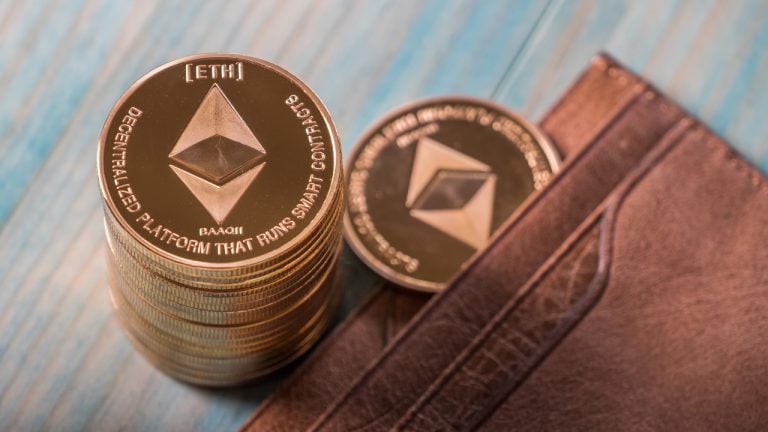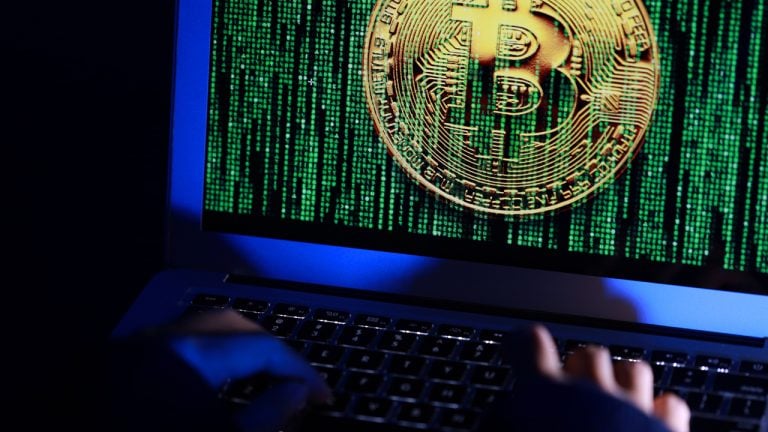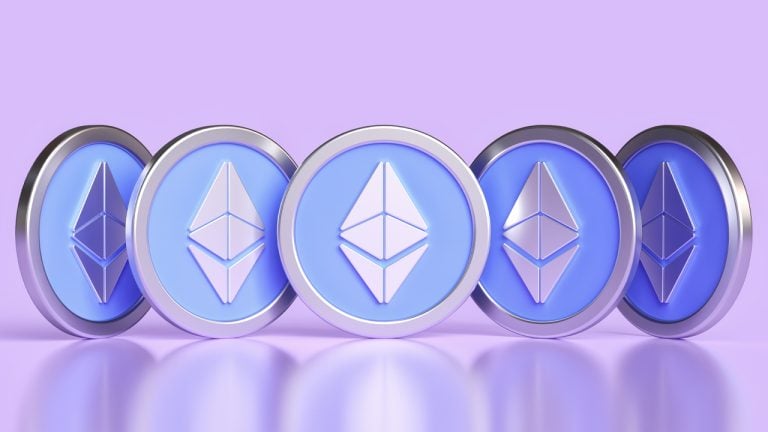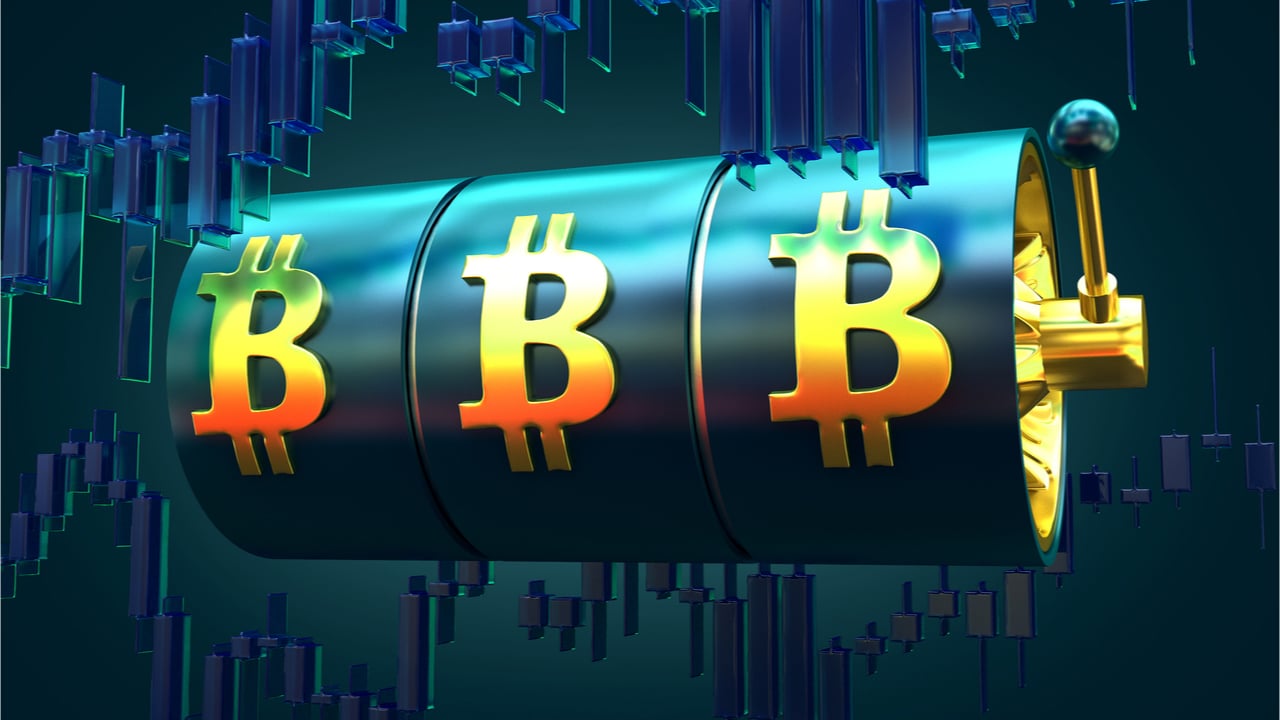 Three days ago, on Nov. 11, 2022, it was reported that FTX’s wallets saw unusual activities and FTX Telegram channel admins stressed that FTX was “hacked.” The same day, the new FTX CEO John Ray confirmed there were “unauthorized transactions.” A report by the blockchain intelligence firm Elliptic explains that out of “more than $663 […]
Three days ago, on Nov. 11, 2022, it was reported that FTX’s wallets saw unusual activities and FTX Telegram channel admins stressed that FTX was “hacked.” The same day, the new FTX CEO John Ray confirmed there were “unauthorized transactions.” A report by the blockchain intelligence firm Elliptic explains that out of “more than $663 […] The world’s largest bitcoin options exchange, Deribit, was hacked for close to $28 million, according to an update from the company’s official Twitter account on Nov. 2. Deribit says that the firm’s hot wallet was drained just before midnight the day prior. Crypto Derivatives Exchange Deribit Loses $28 Million — Company Says Customer Funds Are […]
The world’s largest bitcoin options exchange, Deribit, was hacked for close to $28 million, according to an update from the company’s official Twitter account on Nov. 2. Deribit says that the firm’s hot wallet was drained just before midnight the day prior. Crypto Derivatives Exchange Deribit Loses $28 Million — Company Says Customer Funds Are […]
While Google’s feature appears to be a good thing for crypto adoption, a CIO says a move from Apple would make the “crypto industry go from 100 miles an hour to 250 miles in a heartbeat.”
Google’s latest crypto feature enables some Ethereum wallet addresses to have their ETH balances tracked straight off of the Google search engine — saving the need to make the trip to Etherscan.
The feature was first made public by the Principal of Google Ventures Han Hua in an Oct. 11 Twitter post.
Well done, blockchain address is now available in Google Search! pic.twitter.com/7IuKv1gddR
— Han⚡️ (@hhua_) October 11, 2022
But Cointelegraph’s attempt to search for a Bitcoin address revealed a no-show on Google. Angel Investor Stephen Cole was not impressed, tweeting "Does Google not know about Bitcoin?"
Cointelegraph also tried several different Ethereum addresses — most of which didn’t work. So the functionality is very limited at present and may improve over time.
Nonetheless, recent efforts suggest Google is playing a key role in on-boarding internet users to the world of blockchain-based services and Web3.
The new feature comes in addition to Google’s partnership with crypto exchange Coinbase on Oct. 11 to allow its customers to pay for cloud services in crypto, which is expected to take effect in early 2023.
Google also got in on the Ethereum Merge hype by embedding a countdown ticker until the point at which Ethereum transitioned from proof-of-work (PoW) to proof-of-stake (PoS).
Related: Near Protocol partners with Google Cloud to support Web3 devs
Speaking to Cointelegraph, Chief Investment Officer Markus Thielen of digital asset services platform Matrixport said we shouldn’t be surprised by Google’s efforts in the Web3 space as both commercial banks and Web2 companies continue to do an “enormous amount of work in the background,” adding:
“This crypto winter is clearly different as established firms continue to deploy their balance sheet [to crypto investments] and might even leapfrog the incumbents.”
But while Google’s efforts are welcome, Thielen believes a mass adoption event for Web3 could come “when the iPhone can be used as a crypto wallet.”
“If and when this happens, the crypto industry will go from 100 miles an hour to 250 miles in a heartbeat,” he added.
Vittorio Rivabella, Developer Relations Manager of Web3 development platform Alchemy said the news of Google’s new Ethereum address search feature was “Bullish.”
However, SadPanda.blockchain, the former Editor in Chief at Web3ArtBlog.NFT, wasn’t so thrilled with the news, arguing that Google “will sell our blockchain data to advertisers in order to target us via our wallets!”
Now @Google will sell our blockchain data to advertisers in order to target us via our wallets! hurry up up @unstoppableweb @matthewegould @sandy_carter with Sovereign Data Control to the mases. Now everyone with a wallet address will realize that they need an NFT domain #UDfam https://t.co/kzMZq7jijx
— SadPanda.blockchain | StopWorldWar3.nft (@drumkoon) October 11, 2022
 Following Ethereum’s transition from proof-of-work (PoW) to proof-of-stake (PoS) on September 15, the blockchain network’s transaction fees have been much lower than they were ten days before The Merge. Roughly four months ago on May 13, 2022, high-priority ether transactions could cost 68 gwei or $2.97 per transaction, and today at $0.18, a high-priority ether […]
Following Ethereum’s transition from proof-of-work (PoW) to proof-of-stake (PoS) on September 15, the blockchain network’s transaction fees have been much lower than they were ten days before The Merge. Roughly four months ago on May 13, 2022, high-priority ether transactions could cost 68 gwei or $2.97 per transaction, and today at $0.18, a high-priority ether […]
The Ethereum merge is fast approaching and those with assets at stake should keep a close eye on the following data sources.
The assumption that Ethereum will just transition to a fully functional proof-of-stake (PoS) network after the Merge somewhat ignores the risk and effort necessary to move an asset that has a $193 billion market capitalization and 400 decentralized applications (DApps).
That is precisely why monitoring vital network conditions is essential for anyone willing to trade the event which is scheduled for Sept. 14, according to ethernodes.org. More importantly, traders should be prepared to detect any alarming developments in case things go wrong.
Apart from the $34.2 billion in total value locked in smart contracts, another $5.3 billion in Ether is staked on the Beacon Chain. The network is currently used by many tokens, oracle providers, stablecoins, layer-2 scalability solutions, synthetic assets, nonfungible items (NFT), decentralized finance (DeFi) applications and cross-chain bridges.
This partially explains why the Merge has been postponed multiple times through the years and why it is deemed to be the most significant upgrade in the history of the network.
For this reason, three different testnets have undergone the Merge, with Goerli being the latest on Aug. 11. Curiously, minor issues were presented on all testnet implementations, including Ropsten and Sepolia. For instance, Ethereum developer Marius van der Wijden noted that “two different terminal blocks and lots of non-updated nodes” slightly slowed the process down.
It doesn’t matter what the consensus mechanism is. All blockchains rely on new blocks being proposed and validated. There are established block parameters that must be followed even to be considered by the network participants.
In the case of the Ethereum Merge, an epoch is a bundle of up to 32 blocks that should be attested within six and a half minutes. Actively monitoring the ETH2 Beacon Chain Mainnet from reputable sources like BeaconScan by Etherscan and Ethscan ETH2 Explorer by Redot is important.

Red flags on this monitor would be low voting participation on the epochs, the lack of finality after thirteen minutes (2 epochs) or a grind halt on proposed blocks.
Infura provides infrastructure for building decentralized applications, allowing developers to deploy their solutions without hosting their own full Ethereum node. The company is fully owned by Ethereum venture capital group ConsenSys, which is controlled by Joseph Lubin.
According to Infura’s website, projects relying on its infrastructure include Uniswap, Compound, Maker, Gnosis, Brave, Decentraland and Web3 wallet provider Metamask.

Thus, monitoring Infura’s API is a good starting point to evaluate Dapps' performance. In addition, their status page should reliably display real-time updates, considering how closely tied Infura works with the Ethereum ecosystem.
Related: ETH Merge, CoinGecko co-founder shares strategy for forked tokens
The Ethereum Merge consensus mechanism has embedded penalty rules designed to prevent attacks. Any validator deliberately misbehaving is slashed, meaning part of its respective 32 Ether stake is removed. Repetitive slashes will eventually cause the validator to be ejected from the network. Staking providers and the validator software have built-in protection to prevent someone from accidentally being slashed, for example, if their connection went down.

Traders need to understand that slashing is a standard action of the network, a protective measure, so it should not immediately be deemed unfavorable. A worrisome environment would be hundreds of validators being slashed simultaneously, potentially indicating that their software is not functioning as it should.
There are over 410,000 active validators, so even if 20% or 30% of them eventually went offline, the network would continue as designed. Monitoring slashing is a preemptive measure because it likely indicates that some service, such as a hosting provider, has gone offline or some incompatibility arose during the Merge.
Ethereum advocates should consider monitoring external data instead of just their own node and server. There could be delays or even erroneous warning signs, so using multiple sources of information could help one avoid being misled by data from a single website or a post on social networks.
The views and opinions expressed here are solely those of the author and do not necessarily reflect the views of Cointelegraph. Every investment and trading move involves risk. You should conduct your own research when making a decision.

The richest wallet on the Ethereum (ETH) network increased in value by almost a billion dollars over the past 30 days on the back of strong ETH rallies. According to blockchain tracking service Whalestats, the whale known as Naruto went from a balance of just over $1.98 billion on July 15th to more than $2.96 […]
The post Biggest Ethereum Whale Makes Nearly $1,000,000,000 in Less Than a Month As ETH Cracks $2,000 appeared first on The Daily Hodl.
 After three years of dormancy, a massive ethereum whale that participated in the project’s first token sale, also known as the Genesis initial coin offering (ICO), spent 145,000 ether worth just over $276 million using today’s ethereum exchange rates. Mega Ethereum Whale Distributes 145,000 Ether to 9 Different Addresses On August 14, 2022, onchain data […]
After three years of dormancy, a massive ethereum whale that participated in the project’s first token sale, also known as the Genesis initial coin offering (ICO), spent 145,000 ether worth just over $276 million using today’s ethereum exchange rates. Mega Ethereum Whale Distributes 145,000 Ether to 9 Different Addresses On August 14, 2022, onchain data […] Roughly 49 days ago, the number of bitcoin held on exchange was around 2.503 million, according to statistics recorded by cryptoquant.com. Since then, $4.76 billion worth of bitcoin has been removed from centralized crypto exchanges, as there’s 2.275 million held on trading platforms today. Glassnode reported on July 5, that despite bitcoin’s “weak price-action through […]
Roughly 49 days ago, the number of bitcoin held on exchange was around 2.503 million, according to statistics recorded by cryptoquant.com. Since then, $4.76 billion worth of bitcoin has been removed from centralized crypto exchanges, as there’s 2.275 million held on trading platforms today. Glassnode reported on July 5, that despite bitcoin’s “weak price-action through […] According to the Chinese journalist Colin Wu, otherwise known as “Wu Blockchain,” the cryptocurrency company Huobi may lay off 30% of the firm’s staff due to “a sharp drop in revenue.” Furthermore, the reporter claims that Huobi’s co-founder Leon Li is reportedly looking to sell a large stake in the digital assets company. Colin Wu […]
According to the Chinese journalist Colin Wu, otherwise known as “Wu Blockchain,” the cryptocurrency company Huobi may lay off 30% of the firm’s staff due to “a sharp drop in revenue.” Furthermore, the reporter claims that Huobi’s co-founder Leon Li is reportedly looking to sell a large stake in the digital assets company. Colin Wu […]
Etherscan is a block explorer and analytics platform that allows you to access details on any Ethereum blockchain transactions that are pending or confirmed.
Etherscan is the most trusted tool for navigating through all the public data on the Ethereum blockchain and is sometimes called “Ethplorer.” This data includes transaction data, wallet addresses, smart contracts and much more. The application is self-contained and is neither sponsored nor administered by the Ethereum Foundation, which is a non-profit organization.
The team behind Etherscan includes seasoned developers and industry professionals, who developed the Etherscan app to make the Ethereum blockchain more accessible to everyday users.
Although Etherscan is a centralized platform, the app does make it easier for people to search through the Ethereum blockchain.
Etherscan is not an Ethereum wallet, nor is it a wallet service provider. Users don’t receive an Etherscan wallet when they search the Ethereum blockchain on Etherscan.
Etherscan.io is an independent Ethereum-based block explorer. The Etherscan app keeps track of blockchain transactions on the Ethereum network. The app then displays the results like a search engine.
This allows users to find the details of transactions on the Ethereum blockchain, which may give someone peace of mind if their transferred funds have not yet appeared in their wallet.
While Etherscan can track the activity on an Ethereum wallet address, users will need to link the app to an existing crypto wallet to do so.
You may wonder — Is Etherscan free to use? Yes, Etherscan is completely free.
Etherscan allows users to view the assets held on any public Ethereum wallet address. Using Etherscan, enter any Ethereum address into the search box to see the current balance and transaction history of the wallet under consideration. Etherscan will also display any gas fees and smart contracts involving that address.
Users can use Etherscan to:
Users can view any transaction of the Ethereum blockchain on Etherscan. These transactions include failed and pending transactions.
Etherscan can also keep track of the progress of an incoming transfer. One way to track a transaction using Etherscan is to look it up on Etherscan.io using its hash key. The hash provides users with an estimate of how long the transaction will take to confirm. The page refreshes once the transaction is complete.
Etherscan also works as an analytics platform. Anyone can use Etherscan to analyze on-chain metrics like changes to Ether (ETH) gas costs, as well as keep track of their portfolio and monitor their transaction history for suspicious activity.
Only information that is public on the Ethereum blockchain is displayed on Etherscan, so information like a user’s private keys can’t be viewed on the app. Etherscan doesn’t store any private keys and is not involved in any of the transactions shown. The app also cannot be used to solve a transaction failure.
Users are not required to sign up for an account before using the Etherscan app. However, signing up for an Etherscan account does give users access to additional features. These features include the ability to track addresses and receive notifications whenever a transaction occurs. Developers may also sign up to gain free access to Etherscan’s blockchain explorer data and application programming interfaces (APIs).
Thus, users with accounts can add their addresses to the “watch list” on the block explorer to monitor or track their investments. Users can also set alerts so that they’re notified of every incoming transaction via email. Etherscan also provides API services for developers so that they can create decentralized applications.
Etherscan provides the following information for all incoming and outgoing transactions:
To use Etherscan, simply enter any public Ethereum wallet address into the search field at the top of the Etherscan.io homepage. Doing so will allow users to view all the transactions associated with that address.
Exploring a wallet address on Etherscan under the “Transactions” tab will show a list of all ETH transactions (Txns), or transactions that have used gas (Gwei) associated with that specific wallet.

Type the wallet address on Etherscan’s homepage and click “Search” to be redirected to a page that displays all of that wallet’s information. The data will include its ETH balance and its value denominated in United States dollar, as well as an overview of the wallet’s transaction history.

Click on the wallet’s Transactions tab, which will open up a new page displaying details on all the transactions involving that address. Details include the transaction ID, block height and when the transaction was confirmed.

The block height refers to the block in which the transaction was included. The sender and recipient addresses and the total transaction fee are shown as well.
To explore and track a single transaction, users will need the transaction hash or transaction ID, or TxHash. A TxHash is a unique string of numbers that identifies a transaction on the blockchain.
When users input the TxHash into the Etherscan search bar, a list of information on that transaction will be populated on the page. From here, users can go to the Transactions tab to review additional information about the said transaction. Such data includes whether the transaction status was successful, pending or failed, as well as the total amount that was transferred.
The value of the transaction in ETH, as well as the USD value of ETH at the time of the transaction, can also be viewed. Etherscan also displays the timestamp for each transaction in addition to the transaction cost, denominated in USD.
“Gas” refers to the transaction fee associated with a transaction to be executed successfully on the Ethereum blockchain. Transaction costs on Ethereum are referred to as gas fees.
Ethereum’s network can get highly congested. When a considerable amount of traffic is running on Ethereum's blockchain due to Ethereum’s auction-based model, the average gas price goes up as users compete against one another and bid to have their transactions included in the next block. Consequently, transactions are delayed and some transactions fail.

Gas prices vary depending on the block that the user transaction has been included in, as well as the degree of network congestion. Moreover, users may not be able to discern an accurate estimate of the gas fees they’ll be required to pay before initiating a transaction.
To determine a transaction’s gas fees with accuracy, it’s best to use Etherscan’s gas tracker. Etherscan’s gas tracker does more than simply show users the difference in gas prices at various time intervals. It’s also useful for estimating how congested the network is and what the transaction cost will be per transaction.
The Etherscan gas tracker functions as an ETH gas calculator. It examines pending transactions on the Ethereum blockchain to determine how much gas a transaction will require.
Users receive a gas fee estimate so they can adjust the timing of their transactions to avoid high network traffic. Doing so saves transaction costs and allows for cheaper and smoother transactions, without suffering the anxiety that comes with not knowing whether a transaction will fail or succeed.
To see how the balance in a user’s wallet has changed over time, look up the address of the wallet on Etherscan and select “Analytics.” From here, users can see the data analytics of a user’s wallet, such as the user’s ETH balance, the entire transfer history, transactions and fees paid.

Smart contracts can be read and edited without the need for special permissions by using the Etherscan app’s “Read Contract” and “Write Contract” features. These tabs provide real-time information on various tokens and smart contracts. Users may also use these features to initiate a token transfer and approve smart contract transactions.

Removing a token’s access to the user’s wallet can be achieved using Etherscan’s Token Approval Checker. When users interact with DApps to buy or swap tokens, they tap directly into a user’s wallet with their permission. Therefore, DApps are an appealing target for scammers looking to gain access to users’ Ethereum wallet addresses.
If users see suspicious activity or believe that a DApp has been compromised, they can use Etherscan to revoke its access to a specific wallet address. The user’s assets inside the wallet will not be lost, but users will need to reauthorize the tokens when they access the DApp the next time around.
To use Etherscan to review a user’s approved token list, look up the user’s wallet address on Etherscan’s Token Approval Checker. Doing so will provide users with a list of all approved smart contract interactions with that wallet. From there, users can connect their wallet to Etherscan and click “revoke” to ensure that the specific DApp no longer has access to the user’s wallet.
Etherscan is one of the leading tools for accessing reliable Ethereum blockchain data. Etherscan can review smart contract code, track gas prices and monitor the Ethereum blockchain in real time.
Finally, Etherscan is free and doesn’t require a user to register to access all of its features. Overall, it’s a great place to start for users who would like to learn the full range of functionalities of a blockchain, as well as their Ethereum wallet and what information they can garner from a blockchain explorer.